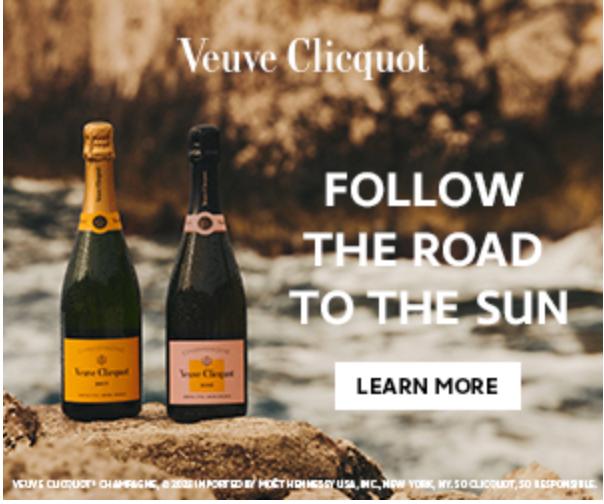NYFW Spring/Summer 2024 is Revealed! Fashion lovers get excited. You can find the full schedule and details below.
It’s almost autumn in New York and what does that mean? It’s time for the annual New York Fashion Week (NYFW).
Fashion is cyclical, so what does that mean this year? We’ll see plenty of new ideas debuted, but we’ll also see many returns. Returns of old favorite designers bringing refreshed favorites. We’ll also see new designers finding fun ways to revisit traditional idea.

One thing is for sure, there will be plenty to talk about and plenty of hits (and misses). But those during swings it was makes the setting so exciting. And no one knows until it hits the spotlights.
New York Fashion Week Highlights
Peter Do’s debut show as creative director of Helmut Lang will formally kick off the American Collections on Friday, September 8.
Raul Lopez, the 2022 CFDA Fashion Awards winner for Accessories Designer of the Year, will close the week with the LUAR show on the evening of Wednesday, September 13, 2023.
Ralph Lauren makes his comeback to the New York runway.
Jonathan Cohen and 3.1 Phillip Lim also return to the week.
First-time additions to the schedule include Advisry, Chan Chit Lo, FFORME, Grace Ling and Sho Konishi.
NYFW Spring/Summer 2024 Show Schedule*
Friday, September 8th
- 9 a.m. – Cinq à Cept (by appointment)
- 10:30 a.m. – A. Potts (presentation)
- 10:30 a.m. – Kent Anthony (presentation)
- 10:30 a.m. – Terry Singh (presentation)
- 10:30 a.m. – Clara Son (presentation)
- 10:30 a.m. – B | M | C (presentation)
- 12 p.m. – Mirror Palais (runway)
- 2 p.m. – Helmut Lang (runway)
- 4:30 p.m. – Sebastian AMI (presentation)
- 4:30 p.m. – The Salting (presentation)
- 4:30 p.m. – SKYCO (presentation)
- 4:30 p.m. – Raleigh Workshop (presentation)
- 5 p.m. – Prabal Gurung (runway)
- 6 p.m. – Collina Strada (runway)
- 9 p.m. – Private Policy (runway)
- All-day appointments: Kobi Halperin, Bugatchi, Et Ochs, Hérve Léger
Saturday, September 9th
- 10 a.m. – Theory (runway)
- 11 a.m. – Bevza (runway)
- 12 p.m. – Proenza Schouler (runway)
- 1 p.m. – Sami Miro Vintage (runway)
- 2 p.m. – TIBI (runway)
- 4 p.m. – PATBO (by appointment)
- 4 p.m. – Alice + Olivia by Stacey Bendet (presentation)
- 7 p.m. – Khaite (runway)
- 8 p.m. – Eckhaus Latta
- All-Day Appointments: Chan Chit Lo, Nicholas Raefski
Sunday, September 10th
- 11 a.m. – Studio 189 (runway)
- 12 p.m. – FFORME (runway)
- 1 p.m. – Colin Locascio (runway)
- 2 p.m. – Jason Wu Collection (runway)
- 3 p.m. – Advisry (runway)
- 4 p.m. – Adeam (runway)
- 5 p.m. – 3.1 Phillip Lim (runway)
- 6 p.m. – AREA (runway)
- 9 p.m. – Who Decides War (runway)
Monday, September 11th
- 10 a.m. – Michael Kors (runway)
- 1 p.m. – AKNVAS (runway)
- 3 p.m. – Dennis Basso (runway)
- 8 p.m. – Tory Burch (runway)
- All-day appointments: Kate Barton
Tuesday, September 12th
- 9 a.m. – Naeem Khan (runway)
- 1 p.m. – Wiederhoeft (runway)
- 2 p.m. – Bach Mai (runway)
- 3 p.m. – NIHL (digital activation)
- 3 p.m. – Pamella Roland (runway)
- 4 p.m. – Carolina Herrera (runway)
- 5 p.m. – Tanner Fletcher (runway)
- 6 p.m. – LoveShackFancy (presentation)
- 9 p.m. – Dion Lee (runway)
- All-day appointments: Interior, Teddy Vonranson
Wednesday, September 13th
- 9 a.m. – KallMeyer (presentation)
- 10 a.m. – Ashlyn (runway)
- 12 p.m. – Frederick Anderson (runway)
- 1 p.m. – Puppets and Puppets (runway)
- 2 p.m. – Bibhu Mohapatra (runway)
- 3 p.m. – PH5 (runway)
- 5 p.m. – Badgley Mischka (runway)
- 6 p.m. – Willy Chavarria (runway)
- 7 p.m. – The Blonds (runway)
- 8 p.m. – Luar (runway)
*This schedule is subject to change.



